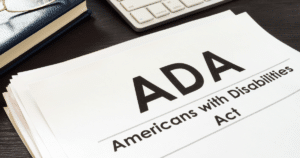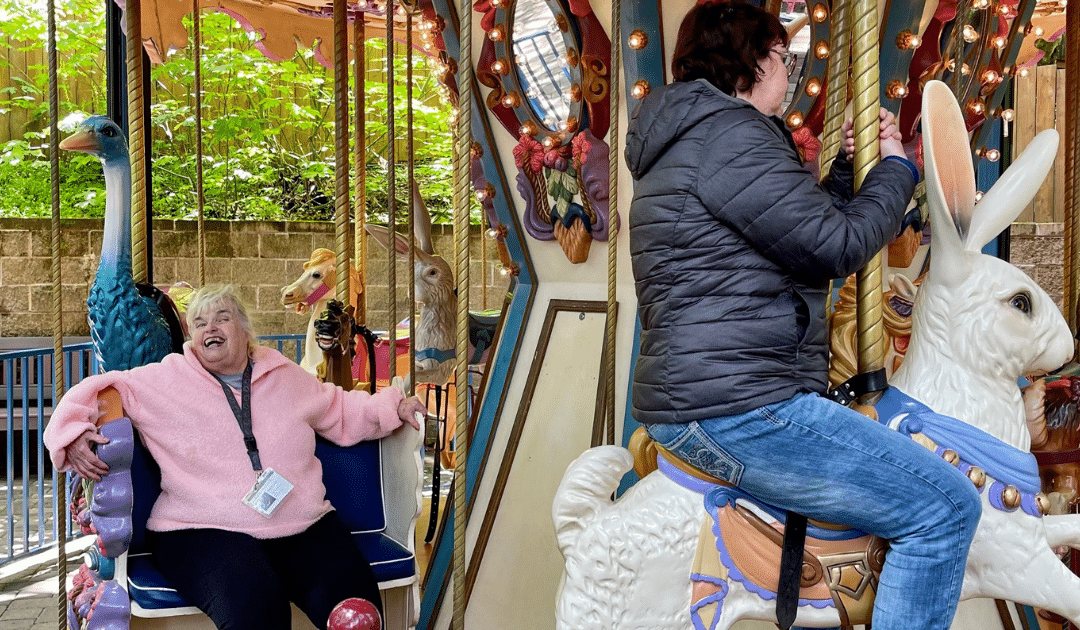Living in a world that’s all about moving forward and embracing everyone, Disability Advocacy and Inclusion shine as these crucial forces making our society more fair. It’s not just about being morally upright; it’s at the core of what makes a community truly progressive and compassionate.
We’re here to break down disability advocacy in a way that’s easy to understand, covering everything from its history to why we desperately need it, the essential principles, the legal stuff, and how technology plays a role in making things more inclusive. We’ll be chatting about success stories, tackling the tough challenges, and looking ahead to what’s on the horizon. The end goal? To get you stoked and ready to be a part of the movement creating a world where everyone, no matter what, gets to live their best life.
Understanding Disabilities
To kick off our journey into disability advocacy, let’s first get the lowdown on the different types of disabilities. We’re talking about everything from physical impairments and sensory disabilities to neurodiversity and mental health conditions.
The disabled community isn’t a one-size-fits-all deal; it’s like this crazy cool tapestry made up of unique stories, strengths, and perspectives. Stereotypes really throw a wrench into the inclusion mindset. The problem is that stereotypes lead to places and social setups that just don’t cater to everyone. Imagine buildings that aren’t easy for everyone to navigate or social spaces that unintentionally exclude certain folks. These barriers end up making individuals with disabilities feel left out, making it tough for them to fully take part in different parts of life. Breaking down these stereotypes is key to creating spaces and communities that welcome everyone.
Breaking stereotypes involves a collective effort to challenge preconceived notions and promote a more accurate understanding of diverse experiences. It starts with fostering open dialogue and creating spaces for authentic representation, allowing individuals with disabilities to share their stories and perspectives. Education plays a pivotal role by deconstructing misconceptions and providing insights into the unique abilities and strengths within the disability community. Promoting inclusive media portrayals and positive role models also contributes to reshaping societal perceptions. Encouraging firsthand interactions and shared experiences helps break down barriers, fostering empathy and understanding. Ultimately, breaking stereotypes requires a commitment to acknowledging the individuality and capabilities of people with disabilities, leading to a more inclusive and enlightened society.
The Need for Advocacy
Now, even with some progress under our belts, individuals with disabilities still face some heavy challenges in life. From societal roadblocks and straight-up discrimination that mess with things like education, jobs, and just hanging out with others. However, personal stories and case studies are the superheroes of change. Hearing about the day-to-day struggles of people with disabilities is what gets advocates amped up to tackle big issues and tear down barriers to inclusivity.
Key Principles of Disability Advocacy
So, how do we approach disability advocacy? There are a few key principles guiding the way. First up, there’s empowerment – giving individuals with disabilities the tools and confidence to stand up for their rights and show off their awesome abilities. Then there’s accessibility – creating environments and systems that work for everyone’s different needs. And let’s not forget about equality – wiping out discrimination and making sure everyone gets a fair shot. Understanding the social and medical models of disability is the secret sauce that helps us tackle both attitudes and bigger system problems.
Social Model of Disability:
The social model of disability posits that disability is not solely a result of an individual’s impairment but is largely shaped by the societal environment and its attitudes. It emphasizes that societal structures, norms, and barriers contribute to the disablement of individuals. In this model, disability is seen as a form of social oppression, where the focus is on removing societal barriers to ensure equal opportunities and inclusion for everyone. The emphasis is on creating accessible environments, fostering understanding, and challenging discriminatory practices. The social model empowers individuals with disabilities by advocating for changes in society rather than focusing solely on altering the individual’s impairments.
Medical Model of Disability:
In contrast, the medical model of disability views disability primarily as a medical condition or impairment that needs to be diagnosed and treated. It places the emphasis on the individual’s limitations and deficits, often framing disability as a problem to be fixed or managed through medical intervention. The medical model tends to center on medical professionals providing care and rehabilitation services to address the individual’s impairments. While medical treatments and interventions are essential, the criticism of the medical model lies in its tendency to pathologize disability and overlook the role of societal factors in contributing to disablement.
Critique and Integration:
Critics argue that the medical model tends to stigmatize and marginalize individuals with disabilities by framing their conditions solely as medical issues. In contrast, the social model is praised for its emphasis on social change and inclusivity. However, both models have their merits. Integrative approaches recognize that medical interventions are necessary for addressing health-related aspects of disability, while societal changes are crucial for fostering inclusivity. This integrative perspective acknowledges the complex interplay between individual impairments and the societal context, providing a more comprehensive understanding of disability.
In recent years, a shift towards a biopsychosocial model has gained traction, recognizing the interaction between biological, psychological, and social factors in understanding disability. This model seeks a more holistic approach, acknowledging the individual’s experiences and the role of societal structures in shaping those experiences. Ultimately, the conversation around disability models is dynamic, evolving, and aims to create frameworks that empower individuals with disabilities and foster a more inclusive society.

Legal Framework and Policies
National and international laws are like the guardians protecting the rights of people with disabilities. Take the Americans with Disabilities Act (ADA) – it’s a big deal in the U.S., making sure everyone gets equal chances in various areas. And policies? They’re like the rulebook for creating a world that’s all about tearing down barriers and making everything accessible.
The Americans with Disabilities Act (ADA) is a groundbreaking piece of legislation enacted in the United States in 1990. It serves as a comprehensive civil rights law that prohibits discrimination against individuals with disabilities and mandates the provision of equal opportunities across various domains. The ADA covers employment, public services, public accommodations, and telecommunications, among other areas. The significance of the ADA lies in its commitment to dismantling barriers and ensuring that individuals with disabilities have equal access to employment, public services, and facilities. It has paved the way for increased accessibility in the physical environment, the workplace, and digital spaces, fostering a more inclusive society.
Likewise, various countries around the world have enacted equivalent legislation, each tailored to the unique socio-cultural and legal contexts of their nations. For instance, the United Kingdom has the Equality Act, Australia has the Disability Discrimination Act, and Canada has the Canadian Human Rights Act. These legislations, like the ADA, aim to protect the rights of individuals with disabilities, promote equal opportunities, and eliminate discriminatory practices. While specific provisions may vary, the overarching goal is universal – to create a society that values diversity, ensures accessibility, and upholds the rights of all its citizens, regardless of ability.
Role of Policies in Fostering Inclusion:
Policies play a pivotal role in fostering inclusion by setting the tone for societal attitudes and shaping the environments in which individuals with disabilities live, work, and socialize. Inclusive policies are designed to break down barriers and create a level playing field for everyone. They encompass a broad spectrum of measures, from anti-discrimination laws to accessibility standards, aimed at promoting equal opportunities and dismantling systemic obstacles.
For instance, workplace inclusion policies may involve reasonable accommodations, accessible facilities, and initiatives to promote diversity and prevent discrimination. In education, inclusive policies ensure that students with disabilities have access to appropriate accommodations and support services. Public infrastructure and transportation policies focus on creating accessible spaces and systems to ensure the full participation of individuals with disabilities in public life.
The role of policies extends beyond legal frameworks; they also serve as instruments of cultural change. By institutionalizing inclusive practices, policies contribute to shifting societal attitudes and fostering a more accepting and diverse community. Moreover, policies provide a framework for accountability, allowing individuals to seek recourse in cases of discrimination or lack of accessibility.
In essence, inclusive policies are the blueprint for constructing a society that values and accommodates differences. They embody a commitment to equality, accessibility, and the fundamental human rights of individuals with disabilities, laying the foundation for a more inclusive and equitable future.

Promoting Inclusive Environments
Inclusive design isn’t just about physical spaces; it’s about making everything – from buildings to tech stuff – work for everyone. We’re diving into initiatives that shout out accessibility and taking a good look at inclusive design principles. Plus, accessible communication and info are like the VIP passes to an inclusive world, making sure everyone can fully jump into social, educational, and work situations.
Technology and Accessibility
Tech is a rockstar when it comes to making things more accessible. Assistive technologies cater to all sorts of needs. And inclusive design in the digital world isn’t just leveling the playing field; it’s creating a world that’s more connected and open to everyone.
Success Stories
Cue the inspirational music! Success stories are the high-fives of the disability advocacy world. Whether it’s organizations rocking inclusive initiatives or individuals breaking down barriers, these stories show us the real impact of advocacy. By celebrating these successes, we’re cranking up the volume on why continuous advocacy and teaming up for change are so important. Here at Central Oregon Collective, we have countless success stories that will move you and bring you to tears just by listening.
Challenges and Future Directions
In reality, there are ongoing challenges in disability advocacy. From attitudes that need adjusting to accessibility gaps that need filling, knowing the hurdles helps us figure out what’s next. It’s helpful taking a look at potential improvements, and inviting others (like you!) to think about their role in shaping a future that’s all about inclusivity.
To wrap things up, Disability Advocacy and Inclusion aren’t just buzzwords; they’re the heartbeat of a society and community that’s all about embracing differences and lifting everyone up. Whether you’re digging into the historical background, getting to know the diverse faces within the disabled community, or rolling up your sleeves for some advocacy action, you’re part of a movement making a world where everyone – no matter what – gets the chance to shine. The journey to inclusivity is ongoing, and every little step gets us closer to a world where everyone’s valued and given the space to rock their own unique identity.

